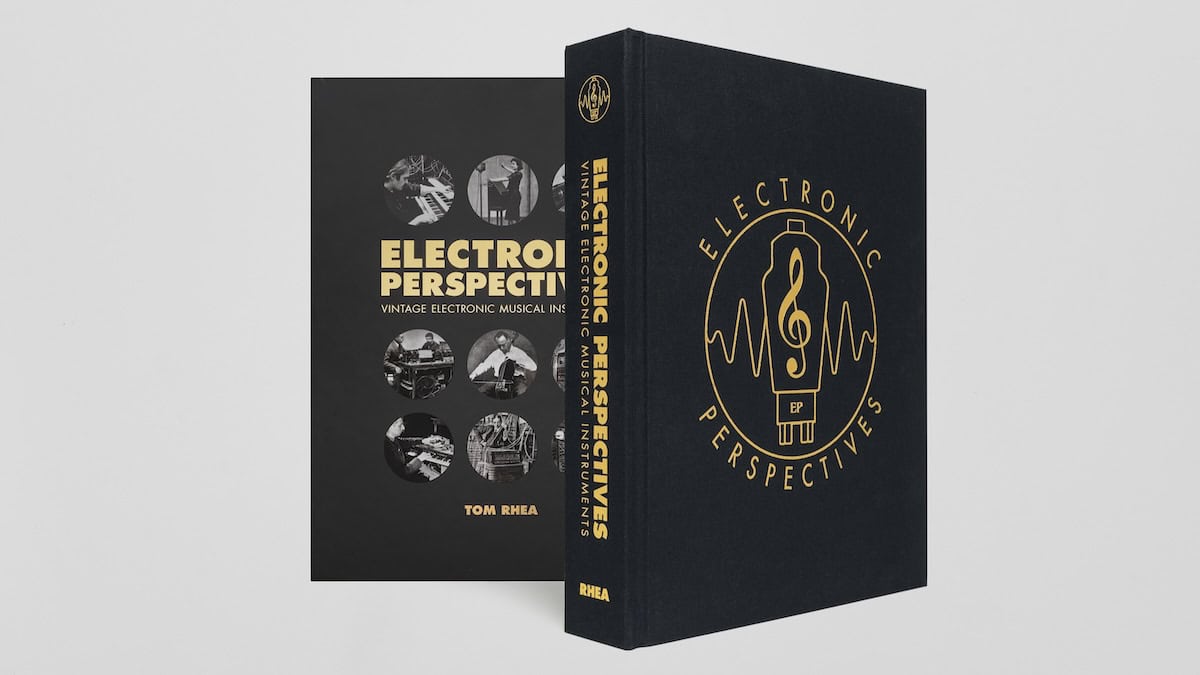Books
Electronic Perspectives: Vintage Electronic Musical Instruments

A Synth and Software book review
Vintage electronic instruments from the 1970s and ’80s are much sought after today, either in their original hardware form or recreated in software. But the synthesizer as we know and love it today did not spring fully formed from the forehead of Bob Moog in 1964. Believe it or not, the first plugged-in keyboard, the Cahill Telharmonium, was built in 1899.
If you’re curious about the rich and colorful history of electronic instruments going back through the early years, you can’t possibly find a better source of information than a brilliant new book called Electronic Perspectives. The core of this book is the series of 52 columns written by Tom Rhea for Keyboard magazine between 1977 and 1981. (Full disclosure: one of my jobs at Keyboard was editing the columns. I was Rhea’s editor at that time.) The material on which the columns were based was drawn from Rhea’s Ph.D. dissertation.

Among the instruments covered, in addition to the Telharmonium, are the Syntronic organ, the Neo-Bechstein electric piano, Maurice Martenot’s Musical Waves (better known as the Ondes Martenot), the Pianorad, the Novachord, the Trautonium, the Electronic Sackbut, the Rhodes electric piano, and the Composer-Tron. There’s a series of columns on the RCA Synthesizer, an early experimental system that put analog sound-producing circuits under digital control. The pioneering work of Bob Moog and Don Buchla is discussed, but not much else that will be familiar to today’s musicians, and obviously there’s nothing since 1981.
Rhea’s columns, which are reproduced from scans of the original magazine pages, are just the beginning. Joining the columns are many, many pages of historic photos, concert programs, advertisements, and diagrams from patent applications. It’s an amazing archive! The book also includes not one but two CDs totaling more than 50 audio examples. A few of the tracks are very old indeed, with the sort of audio quality you’d expect, but many are more recent recordings. Some are musically satisfying, some bring back memories, and some are just plain odd.
At $99, Electronic Perspectives may seem like a luxury item, but really the price is absurdly low considering the breadth and depth of the content. It’s a hefty 400-page hardback, roughly 11 inches by 9, and comes in a sturdy slipcase. The one thing that’s missing is an “About the Author” page. Rhea taught at Berklee College of Music for 30 years, but you won’t find that fact in the book’s front matter or back matter.
Nobody has coffee tables anymore, so we can’t call this a coffee table book, but it has the same grand presentation. Maybe you’re just looking for a conversation starter, or maybe you’d like to discover where the world of electronic music began and how far it has come. Either way, Electronic Perspectives will have an honored place on the shelf in your studio.
-

 Covers4 weeks ago
Covers4 weeks agoImage-Line FL Studio 21.2.3: the Synth and Software review
-

 In This Issue4 weeks ago
In This Issue4 weeks agoNew From Orchestral Tools, Monolith by Richard Harvey
-

 Covers2 weeks ago
Covers2 weeks agoArturia Pigments 5.0 Polychrome Software Synthesizer: the Synth and Software Review
-

 In This Issue3 weeks ago
In This Issue3 weeks agoNew Chromaphone 3 and AAS Player Plug-ins







